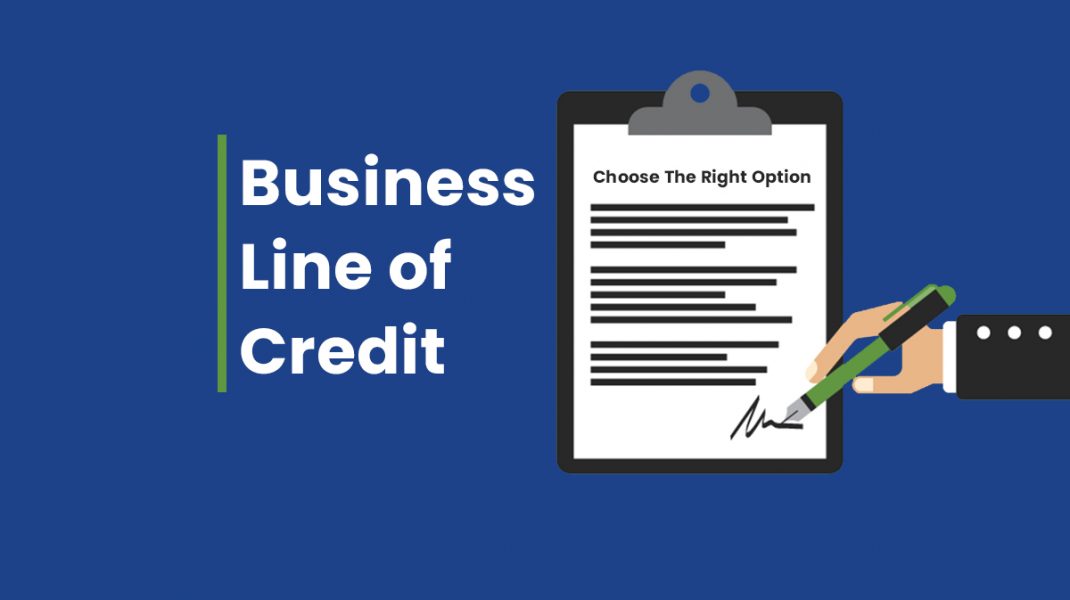Business Line of Credit: How to choose the right option?

Business Line of Credit: How to choose the right option?
A business line of credit helps provide entrepreneurs with consistent access to borrowed capital. They can use this capital to keep up with recurring expenses and the seasonal ups and downs in business. Over 50% of businesses owners experience cash flow problems during the life of their business. In such situations, a small business line of credit can be necessary to maintain regular business operations.
Irrespective of cash flow issues, many businesses keep a line of credit handy for unexpected growth or expansion opportunities. A business line of credit is a flexible, low-cost way to cover short-term financing needs regardless of the nature of those needs.
In this article, we’ll take a look at the business line of credit and help you figure out how you can choose the right option. So, if you’re considering opening a business line of credit, then you must read this article before making a decision.
Business Line of Credit - What is it?

A business line of credit, also known as revolving line of credit, is a flexible loan option for businesses. A line of credit is similar to a credit card. You can access your credit line, make repayment, and access the credit line again.
In line of credit, businesses are allocated a specified maximum amount of capital by a lender. This capital is based on certain factors such as cash flow and business credit rating.
It’s for the business to decide when, if, and how they will use that borrowed capital. There will be a specified repayment period. But, there’s no penalty for paying early, just like a credit card.
Interest is only charged on the amount of credit accessed. But, depending on the lender, you may be charged a monthly maintenance fee for making your line of credit available.
What do you need to qualify for a Business Line of Credit?
To decide whether you qualify for a Business Line of Credit or not, a lender will look at a lot of factors related to you and your business. They’ll look at your time in business, personal credit score, annual revenue, strength of your cash flow and the strength of your business credit.
Lenders take a look at all these details to evaluate your business’ creditworthiness. If you haven’t already, then we suggest that you start building your business credit. It will be mandatory for you to even be considered by most lenders.
The ideal time to open a line of credit for your business is when your business has healthy revenue and cash flow. This is true for most financing options. You’ll qualify for the best terms when your business is in good financial shape, with no cash flow problems.
Things to take care of while applying for Business Line of Credit

1. Secured or Unsecured Line of Credit
Before opening a line of credit for your business, first determine whether you want a secured or an unsecured line of credit.
A secured line of credit requires some form of collateral to be put up as security. So, the lender can seize the collateral if you’re unable to fulfill your financial obligations. This collateral could be real estate, equipment, or inventory, just to name a few examples.
An unsecured line of credit does not require collateral but this also makes it more difficult to qualify for. Most likely, the lender will take into consideration your business’s annual revenue, personal credit, and business credit.
2. Interest Rate
Typically, Interest starts to accrue as soon as you borrow against the line of credit limit. So, you must pay extra attention to the APR that the lender is offering.
Make sure that you do your due diligence and research before opting for a lender. You must know exactly how much the line of credit will cost you along with all the associated costs.
3. Amount
The amount you intend to borrow against the line of credit should also determine the merit of an offer. It’s possible that your business might need an entirely different financing product. A term loan, cash advance, or credit card might be a better option for you than a line of credit. For example, if you want to borrow a large sum with a long repayment term, a small business loan could be a cheaper option.
Determine your business’ needs and only borrow according to that. Borrowing more than what your business needs could be detrimental to your business.
4. Terms and Conditions of Loan
You must go through all the terms and conditions of borrowing before accepting an offer. You should know how often the lender requires payment. The lender may have a policy that requires you pay your balance down to zero for a short period of time at least once a year. Although not all lenders have this condition, however you must do your due diligence.
Research all the terms and conditions of the line of credit and the lender before making a final decision.
5. Fees
Ensure that you read the terms on fees while choosing a business line of credit. The lender might charge an annual fee to keep the bank account open even if the line isn’t being used. You may also be charged a transaction fee for using the line.
You must also check if there are any opening fees to set up your business checking account or closing fees if you subsequently decide to forfeit the line.
Final Words
Business line of credit has many benefits associated with it. These include flexible repayment terms, immediate access to cash, and more. It is also much cheaper than business credit cards with lower APRs. But, choosing the right offer could mean a lot to your business down the line. Apart from checking the terms of offer, you must also consider what’s the purpose for which you’re opening the line of credit and how you plan to use it. Consider your business’s financial needs carefully and thoroughly. Choose the offer that will be most cost efficient for your business in the long run.
Got any questions? Let us know in the comments below or
write to us and we’ll get back to you at the earliest!


Write a reply or comment
You must be logged in to post a comment.